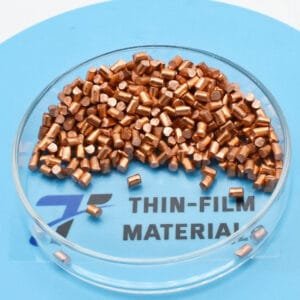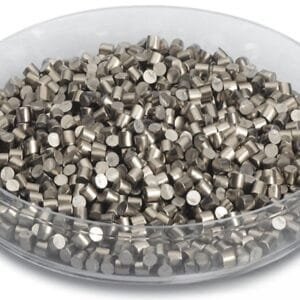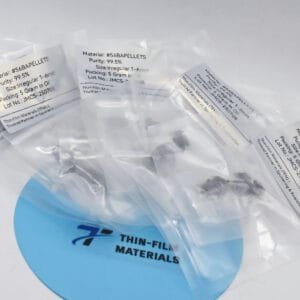Silver Evaporation Materials Description
Silver, with a melting point of 962°C, a density of 10.5 g/cc, and a vapor pressure of 10^-4 Torr at 1,105°C, has been utilized in numerous applications since ancient times. Known for its ductility, malleability, and being the most electrically conductive metal, silver is considered a precious metal. It is commonly used in jewelry, solders, paints, and mirrors.
In deposition processes, high-purity evaporation materials are crucial for achieving high-quality deposited films. TFM specializes in producing silver evaporation materials with purity levels up to 99.99%. Our rigorous quality assurance procedures ensure that our products meet the highest standards of reliability and performance.

Silver Evaporation Materials Specification
| Material Type | Silver |
| Symbol | Ag |
| Atomic Number | 47 |
| Color/Appearance | Silver, Metallic |
| Melting Point | 962 °C |
| Theoretical Density | 10.5 g/cc |
| Synonyms | Silver Pellets, Silver Pieces, Silver Evaporation Pellet, Ag Pellets, Ag Pieces, Ag Evaporation Pellet |
Silver Evaporation Materials Applications
- Deposition Processes: Silver evaporation materials are employed in various deposition techniques such as semiconductor deposition, chemical vapor deposition (CVD), and physical vapor deposition (PVD).
- Optics: They are also used in optics for applications like wear protection, decorative coatings, and display technologies.
Silver Evaporation Materials Packaging
We take great care in handling our silver evaporation materials to avoid damage during storage and transportation, ensuring that their quality remains intact in their original condition.
Get Contact
TFM offers silver evaporation materials in a range of forms, purities, sizes, and price points. We excel in producing high-purity e-beam evaporation materials, focusing on achieving the highest density and smallest average grain sizes. For current pricing on evaporation pellets and other deposition materials not listed, please contact us for more information.

 MSDS File
MSDS File



Reviews
There are no reviews yet.